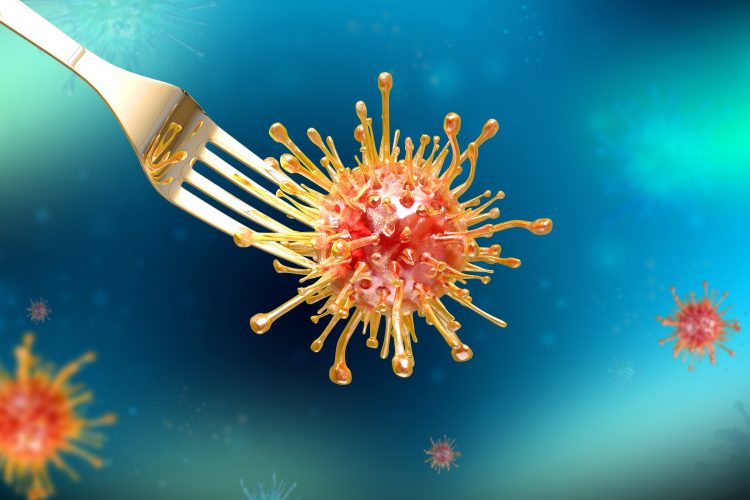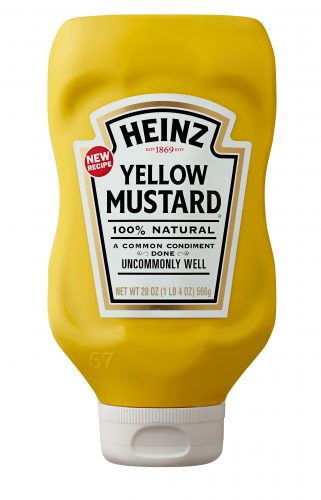Prioritising safety in food manufacturing
Posted: 22 August 2019 | Kurt Deibel | 1 comment
Using a combination of strict routines and technology, alongside continuous self-improvement, Kraft Heinz Company has developed a culture in which food safety comes first. Kurt Deibel, Head of North American Food Safety & Quality, explains more.


For a global food company like Kraft Heinz, food safety and quality are our highest priorities. They represent the core of our business and so we must get them right. Whether it’s an iconic product that has been around for generations – like ketchup or macaroni cheese – or something completely new, food safety is always at the top of the agenda. As we conceive and design new products, our food safety team is involved from day one. Cost and production considerations are key factors in deciding whether to move forward, but prior to this stage any questions regarding the safety of the product must be resolved. Not only must we understand every aspect of the potential supply chain and manufacturing process, we also need to understand the biological, physical and chemical hazards in every step of the process.
An issue that has become increasingly high profile is allergen contamination. The diversity of products we make necessitates a lot of time thinking and guarding against this risk. From the moment that raw material enters a plant, everything is stored in specific locations. For example, we never store an allergen product above a non-allergen product. If a manufacturing line is switching from one product to another, it must be cleaned properly and followed up with allergen swabs to ensure no residue is left on the line. We also validate the cleaning practices on each line by conducting a complete tear down of the line and using allergen swabs to ensure all residue is removed.
As consumers increasingly demand fresher products with no artificial preservatives, colours and flavours, the food safety risks can increase – especially those related to foodborne pathogens. As risk profiles change, we actively search for ways to improve our ability to prevent these hazards. We are always looking for new methodology to test pathogens faster, to improve our ability to prevent foreign objects from entering our products and to prevent food allergens from cross contaminating products that do not contain a specific allergen. Consequently, we have embraced several new technologies.
First on the list are the ever-improving X-ray machines, which have been installed on nearly all our product lines. These are used to address one of the largest recall sources – foreign objects in food. Traditionally, food companies have used metal detectors to ensure that metals from equipment wear and other sources do not make it into food products, but these are clearly limited just to metals. Newer X-ray detectors with increased sensitivity can find metal as well as wood, bone, glass, stones and hard plastics, thus vastly expanding our ability to prevent foreign material from contaminating our products. For example, we had previously found small stones from growers’ fields inadvertently making their way into our pickle jars; a problem that has since been resolved. Another concern that technology is helping us address is unlabelled allergens. This is one of the largest causes of allergen recalls and can happen when the wrong label is applied to a package or the allergen is missed when the label was created.
Our solution is to use 2D codes and scanners, which have been incredibly helpful. Labels can be mixed up at the label supplier location and sometimes in the food manufacturing plant. The traditional bar code, otherwise known as 1D, contains a very limited amount of information. In contrast, 2D scanners allow more information to be stored and can more easily be used on assembly lines. For products that have multiple labels, a 2D code can be put on all labels and scanned to ensure everything is correct. We have installed 2D scanners on all our high allergen products and installation is almost complete on all manufacturing lines – even those with no allergen risk.


We also use the latest in genetic technology to ensure our food is safe. Foodborne pathogens can pose a huge risk to the food industry, especially in certain ready-to-eat products, so it is important to prevent pathogens from contaminating products on the assembly line. One way to help achieve this is using environmental swabbing techniques to detect the location of pathogens, as well as genetic fingerprinting to determine if these microorganisms are colonising in places that are hard to clean. These types of technologies enable us to identify and eliminate this potential hazard. For example, if a pathogen is found near a manufacturing line, we can immediately carry out ‘detective work’ – something not possible a decade ago – to determine the original location of the pathogen and eradicate it quickly.
There is no doubt that these types of technologies have been helpful; yet they are only effective given the right type of working culture. Here at Kraft Heinz, our employees undertake a series of rituals and routines: for example, while importance is our 30-minute line checks in which every product manufactured on every line is checked once every 30 minutes, in addition to all other quality checks. This routine has enabled us to catch and divert many potential problems before they became an issue.
Another of our rituals is constantly testing our technology. We make sure every employee knows how the instrumentation works, as well as what risk they are designed to prevent. Every hour, samples of foreign objects are inserted into the lines with X-ray machines to ensure the machines are detecting correctly. For example, we put 2mm glass or metal spheres in a clearly marked container and run it through the machine. Of course, employees at our plants receive both general and specialised training that is unique to their roles and responsibilities; this not only happens when an employee begins their employment but is continuous throughout their career. This fulfils a need for refresher training and ensures that tweaks in our training programmes, necessitated by changes in government regulations, are incorporated. We also train employees who are not directly involved in the manufacturing process – including R&D personnel, sales, marketing and business-focused employees – on all aspects of food safety. Our culture of ‘meritocracy and ownership’ means every employee is obliged to take food safety seriously.
Given that not all our products are made by us, working with outside manufacturers is an important component of Kraft Heinz’s overall food safety picture. We have strict standards for all our co-manufacturing plants to ensure that they meet the same standards that we employ in our plants. Before agreeing to make a product with a specific manufacturer, we invest time in looking at their practices, procedures and control points; and of course, they are frequently audited by Kraft Heinz food safety experts.
We follow industry recalls closely because we regard them as important educational resources. Whenever a competitor has a recall, we always examine the situation to see if our routines and technologies would have prevented the issue. We constantly review our procedures and focus on continuous improvement over time. Kraft Heinz has not experienced a Class 1 recall in more than two years – a trend we hope will continue with the use of technologies and ongoing employee training. And although we are proud of our food safety standards, we recognise that this is one area where we can never rest.
About author
Kurt Deibel has worked for Kraft Heinz since 2010. He currently leads the Food Safety & Quality function for Kraft Heinz North America and is responsible for quality and food safety for all aspects of the supply chain. Prior to Kraft Heinz he held various leadership positions in food safety and quality with Gerber Products Company, General Mills and PepsiCo. Kurt received his PhD from The Ohio State University in Food Microbiology.
Issue
Related topics
Contaminants, Equipment, Food Safety, Processing, Recruitment & workforce, Technology & Innovation










Good stuff, Kurt. I especially like that “every employee knows…how instrumentation works ….and what risk they are designed to prevent.” While many companies are afraid to tell employees, particularly front-line employees, what risks are inherent to any food production facility due to the worry that information will leak (e.g. “They found metal in food at the plant today…) and the information will be detrimental, it is nice to see someone educate front-line about the risks. These folks, after all, are the ones that can, if educated, mitigate the risk the most.